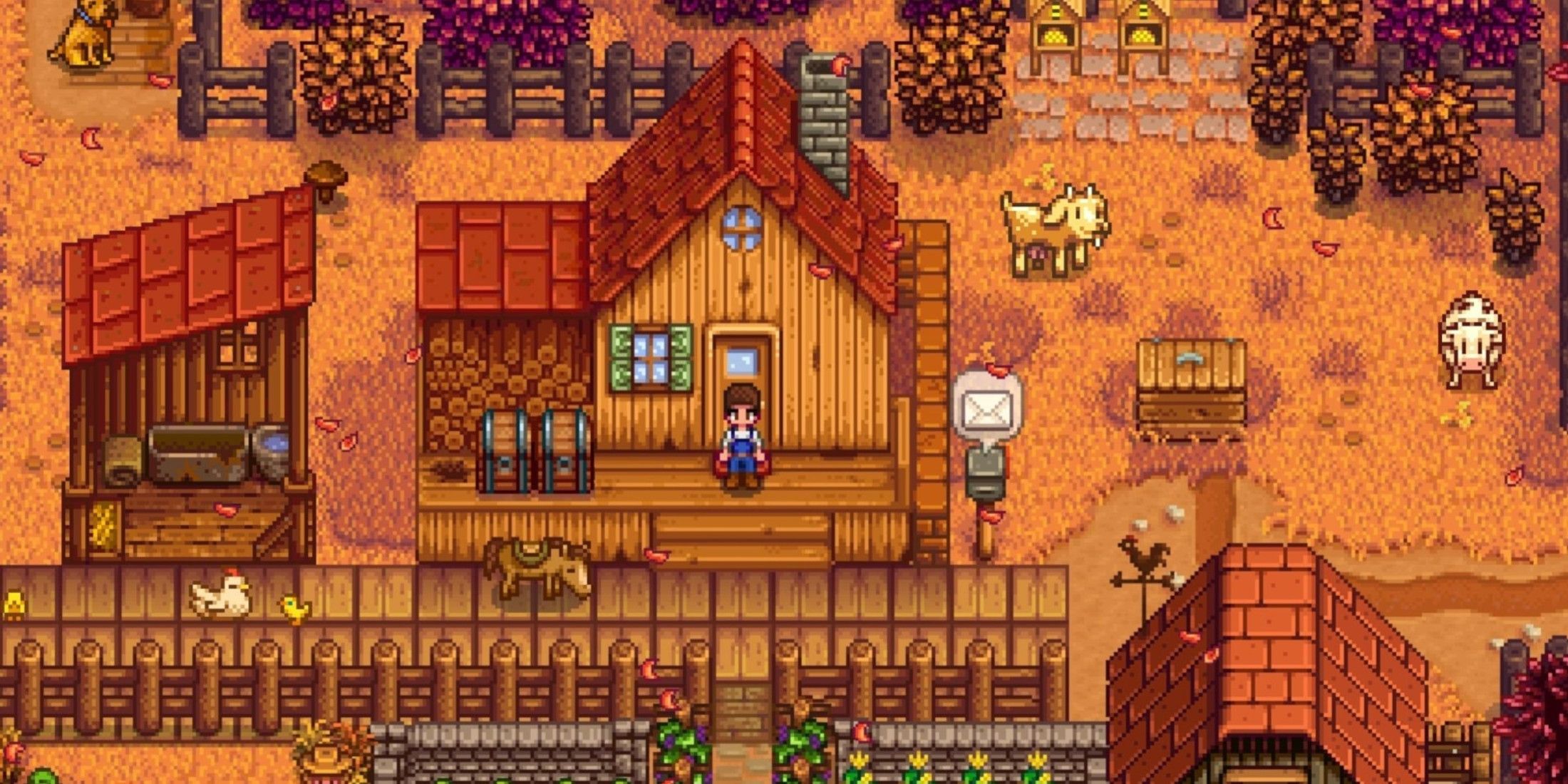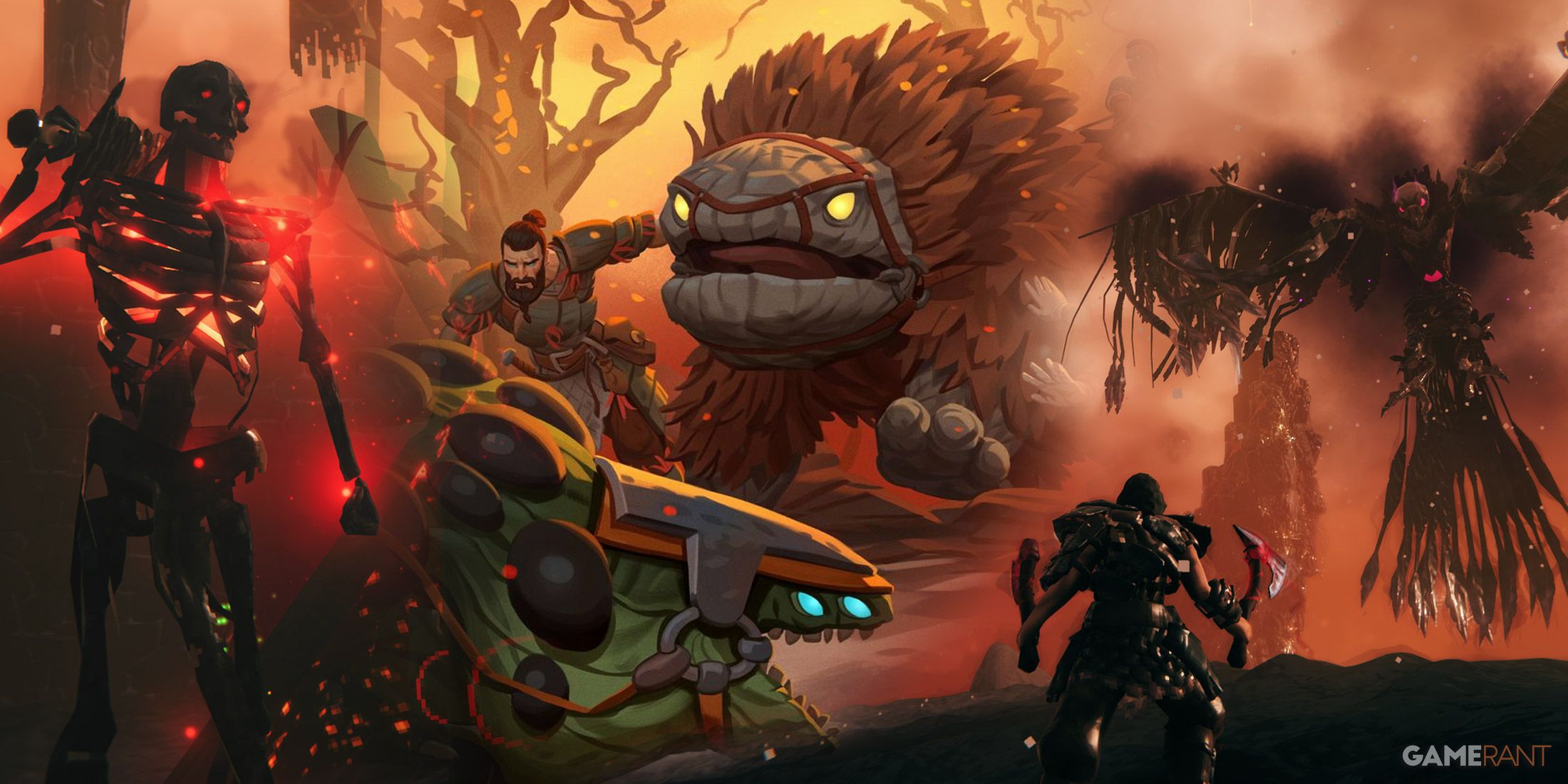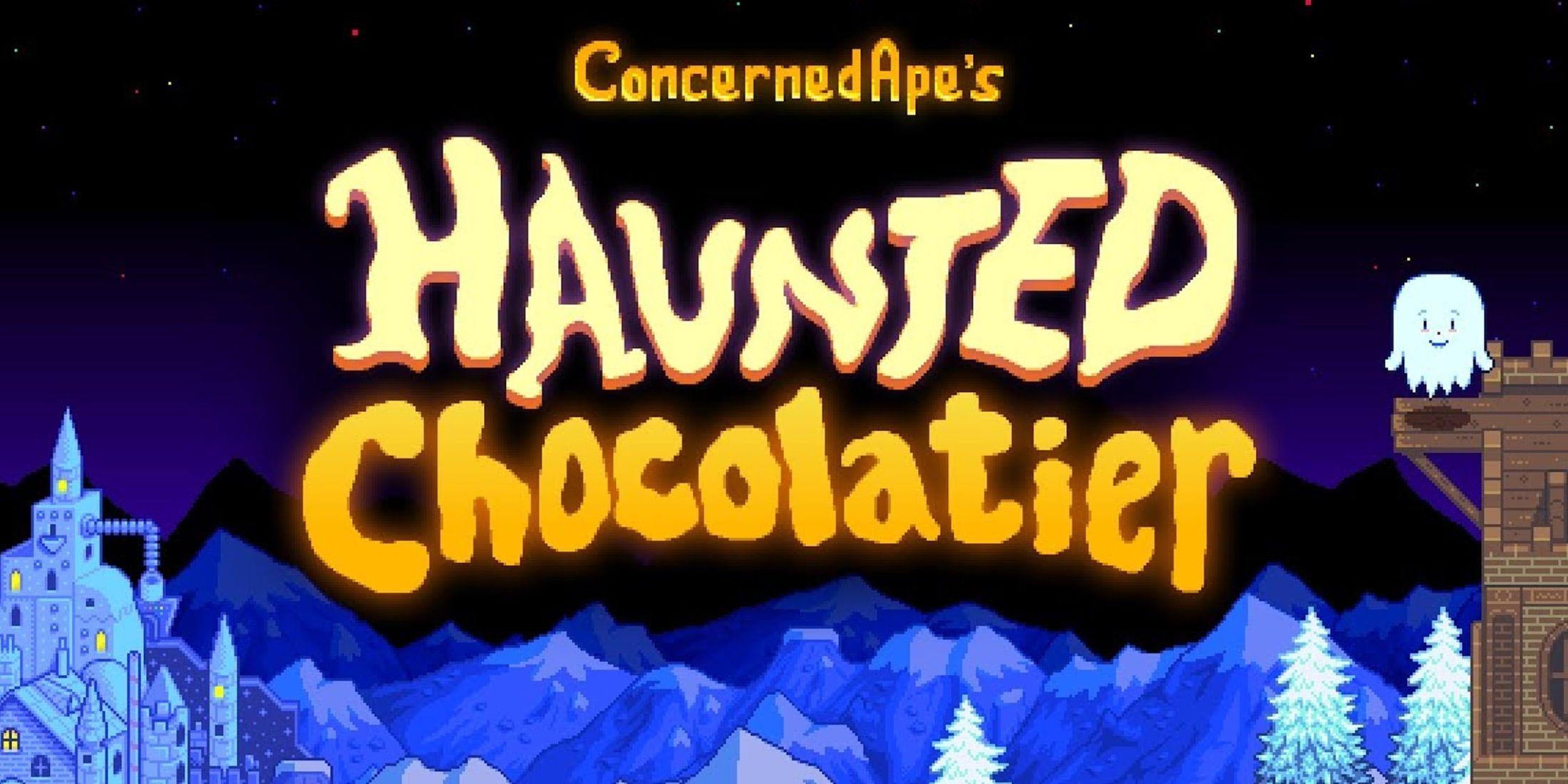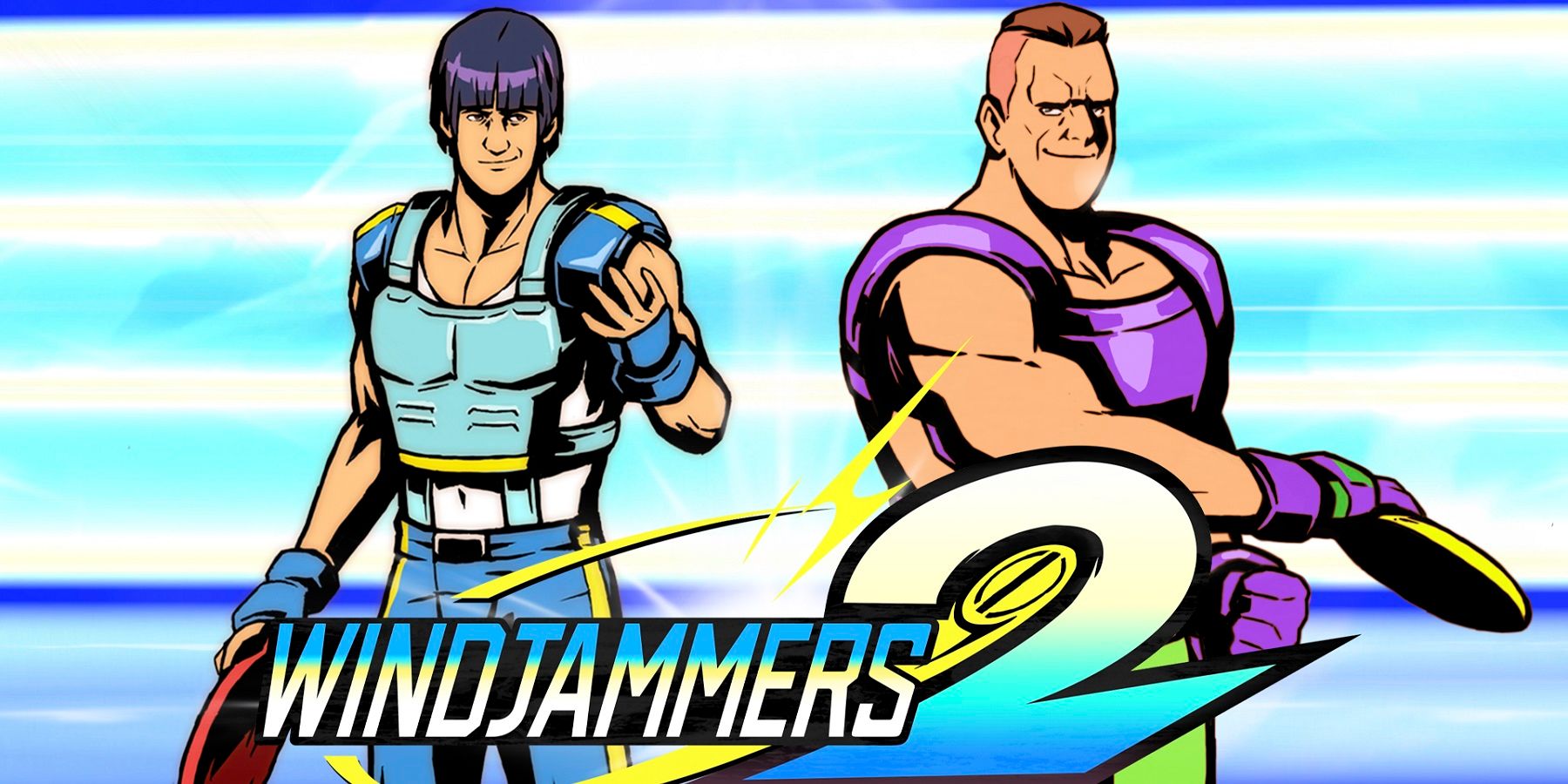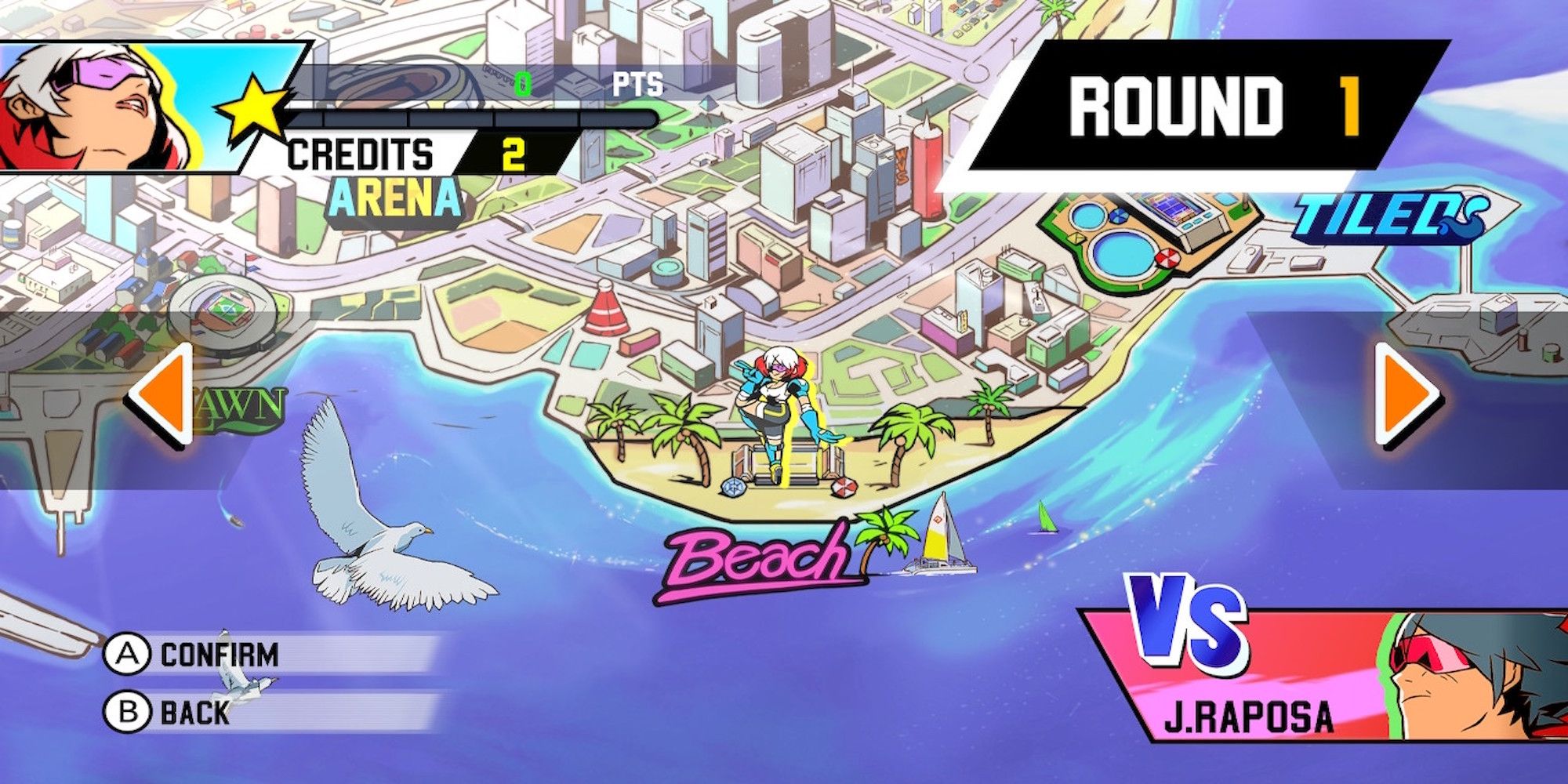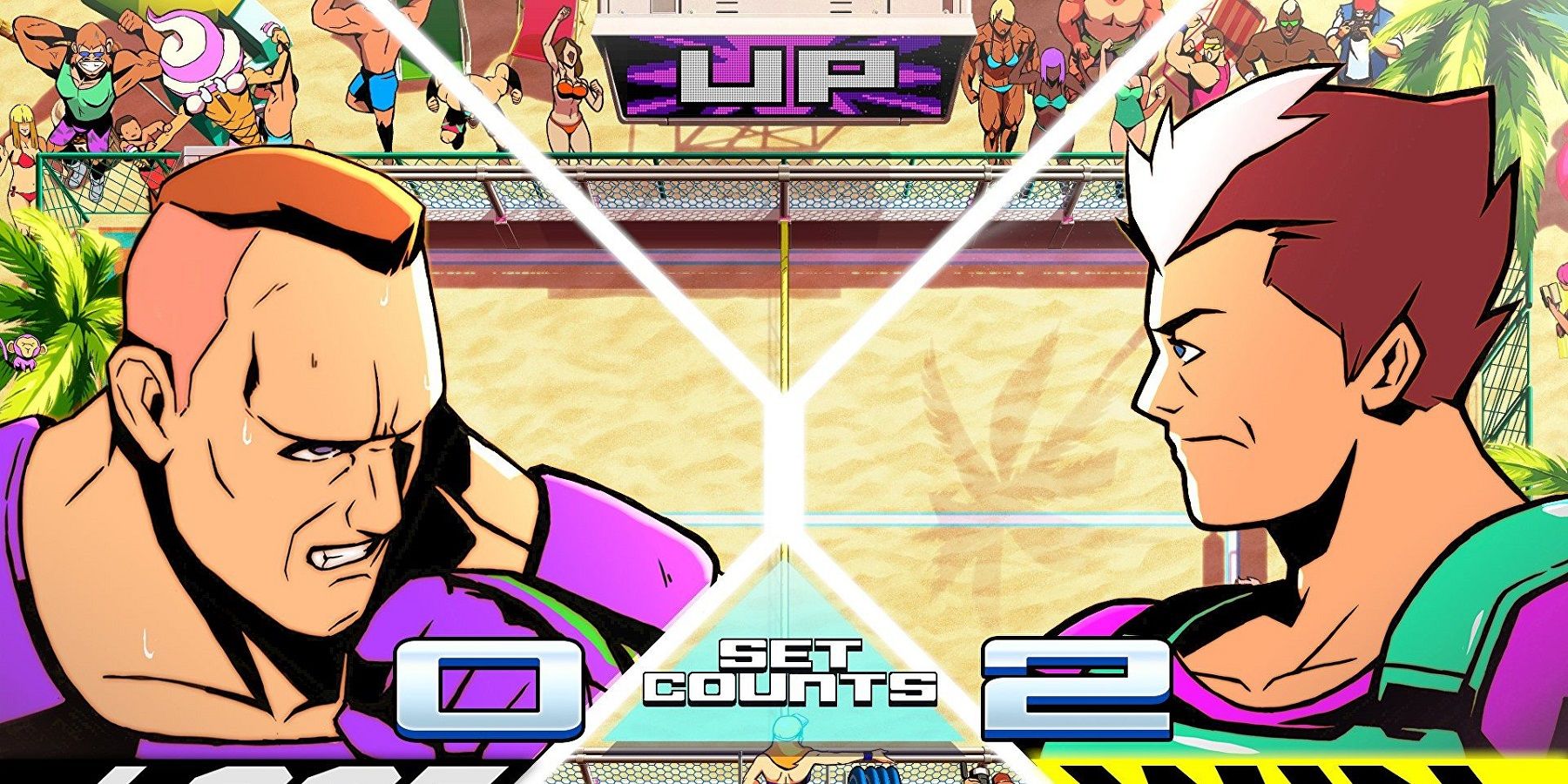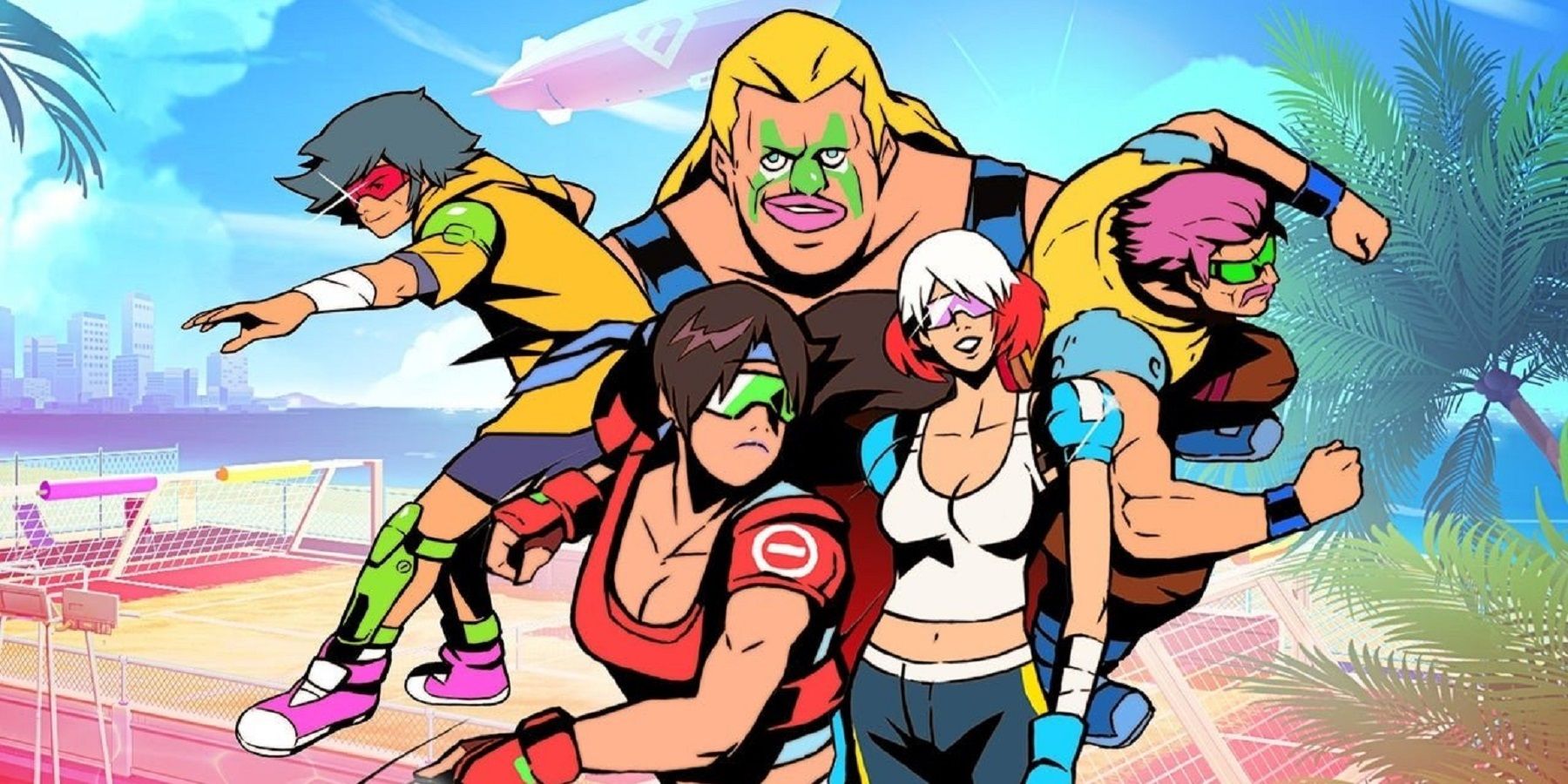Reviving a cult classic is never easy, but Dotemu appears to have pulled it off with Windjammers 2. Not only is Windjammers 2 a sequel to a cult classic sports game, but it's also a sequel that took about 28 years to come out. Fortunately, Dotemu put a team of Windjammers fans in charge of the project, and everyone involved seems to have gone above and beyond. Lead programmer Kevin Delbrayelle and art director Stephane Perez worked especially hard on Windjammers 2's polished mechanics and stylish hand-drawn graphics, respectively.
Game ZXC spoke to Delbrayelle and Perez with assistance from facilitator Thomas Schulenberg about how Dotemu pulled off such an incredible revival of an IP that lay dormant for years, why the team chose to add what they did to the game, and what drove them to create such a labor of love. Interview has been edited for brevity and clarity.
Q: The first Windjammers game came out in 1994 for the NeoGeo. How did you end up with this old property?
Perez: I think it was quite a long journey. Back in the day, it was supposed to be Data East and SNK, they both worked on the game. But it was Data East who possessed the IP, and I think it moved to other companies. The first thing was to find which company possessed the IP. It took some time to deal with that, but we finally managed to get it, and we proposed to make another game, a sequel.
Delbrayelle: I think the Windjammers IP was owned by Paon DP, which is a Japanese company. It got the rights for Windjammers and some other old Data East games. At Dotemu, we have done quite a lot of SNK ports for mobile phones, and unfortunately, Windjammers was not an SNK IP. So it was not easy to get the IP. Because Paon DP is a rather small company, it’s not Konami or Sega.
Perez: I think the tricky part was that all the IP our buyer found was sold to different companies. So it took a good while to get the Windjammers IP.
Q: It sounds like you guys put in a lot of work to get the rights to make this game.
Perez: Yes, we traveled to Japan to get the IP.
Q: What made you so driven to get these rights and make this game?
Delbrayelle: I think it first began with the original game, which was ported to PlayStation 4, Nintendo Switch, and Playstation Vita. We had just ported the original game, the Neo Geo one, over to the PlayStation via emulation, and we added some online features so players around the world to be able to play together. But the game was really the original one—there was nothing new except for the online mode. And the deal made with Paon DP was to first make this adaptation, and then we can use the IP to do a sequel. If I’m not wrong.
Perez: No, you’re right, that was the story.
Delbrayelle: Actually porting the original game onto the PlayStation was my first job at Dotemu. Before porting the game, I knew the game but I never really played it. I kinda got obsessed with the game and here we are.
Perez: We did know the game at Dotemu for a long time. We used to play on the arcade cabinet, so we really, really wanted to make it sicker—to do something with this game. So we are very, very happy now that we did what we wanted to.
Delbrayelle: Yes, because the game is known by some hardcore fans, but it’s not a very well-known game. Perhaps we thought the game deserves more fame.
Q: I did hear that Windjammers has something of a following in France. Are these the hardcore fans that you mentioned?
Delbrayelle: You mean, some hardcore fans? Like Windjammers friends? Yes.
Q: How did you try to capture the spirit of the original game while working on Windjammers 2?
Delbrayelle: We first tried to replicate the original gameplay. We first wanted to have the same game before adding anything new, because we wanted the players to really—we wanted the game to really feel like Windjammers. As we had returning characters, we wanted the returning characters to play like the original. It was our main goal. We first played the game a lot, and we looked at a lot of things about the game like animation and the speed the disc moves at. We were using an emulator and skipping frame by frame, trying to understand everything. Sometime later in development, we kinda got stuck—there were some subtleties we couldn’t replicate in the original game. So we started trying to disassemble the original ROM. It’s binary data, and inside there’s code and there’s graphics and sound, and we took everything and tried to make sense of what the code says. And since we didn’t have access to the original source, we just had machine code, we had to really guess what it was doing. We started to guess some things, and the more you guess, the more you can understand everything. It’s akin to archeology—you scratch the surface and you find something, and then you find something else, and by the end you kinda have the whole picture. But there are still some things you don’t know.
Q: So you reverse-engineered the original game before you got started working on anything else.
Perez: Yeah. It took about one year.
Delbrayelle: There are still some things that we don’t really know how they work in the original game. I think that the sequel replicates the original game like… 99%? It’s very close. I actually translated the original code into modern language, but the logic is the same. After this year, we added new features and added the graphics and everything, and we still were sometimes looking into the original code. We were not sure how the disc was moving when this particular character was doing this move, so we’d get back into the original code to try to understand and replicate this in the sequel.
Perez: After this part was done, we focused on the new things we could put in the gameplay to make the sequel really interesting. We wanted something more than the original arcade game—like the online part, more characters, more moves. So all this stuff, we had to wait one year to make it as perfect as the first one. We had the time to think about the new features.
Q: Windjammers 2 features a number of new challengers, courts, and abilities that enhance the strategic aspect of the game. What inspired some of these new additions?
Perez: We talked about the fun stuff that we could include in the game. We didn’t just want to put features in and make it bigger. We wanted to choose the right features and not include everything. So there was a lot of iteration, a lot of ideas we tried, and we just kept a few ones that seemed like the good ones. To make an interesting sequel and a fun game.
Delbrayelle: What was interesting was that because we had kinda replicated the behavior of the original game, we had a framework to work with. The features we added were features the original team could have had in the original game if they had the time or the idea or the will to. And the money. Because of this, I think a lot of the features we added fit in the game. We really used the original behavior of the games, the original framework, to plug things in.
Q: I heard at least one of the new characters was inspired by the idea of a fan who’d grown up watching the other characters, and so his move set was inspired by two of the existing characters. Could you tell me a bit about that?
Perez: The name of this character is Jao Raposa, a guy from Brazil. What we thought would be interesting was to have a new character size—he’s a very small guy, but very quick. In the original game, there are three kinds of player: small, medium, and heavy. We decided to do two other characters, the very slim one and the very heavy one. The idea of this character was to make a young guy who’s passionate about the original Windjammers game and is trying to reproduce some of his idols’ moves. When you play him, it’s kinda familiar, but the moves have some slight differences from the original character—who’s Steve Miller, by the way—so it was fun to create a character like this one.
Q: It sounds like you might have based Jao off the idea that the kids who played the original Windjammers were now growing up to be in the sport.
Perez: Yeah, that’s it. In the original game, we didn’t know this back in the day, but all the characters are champions in different sports. I think Biaggi is a goalie in soccer, I think Miller is a tennis man, Mita is a tennis woman. It was quite important for us to keep this idea that every character came from another sport, so Jao has some moves that come from capoeira. You know, this dance battle, that they practice in Brazil. We kept the idea of all the characters having used to play a different sport, they used to be champions before playing Windjammers.
Q: How would you describe Windjammers 2 as a game?
Perez: I would say it’s Pong on cocaine.
Delbrayelle: To me, it’s really like a fast-paced action sport game. The thing I like about this game is that it’s not really in any real category—it’s not a shoot ‘em up, it’s not a platformer, it’s not a soccer game, it’s kinda a mixture of Pong and an action game. That’s not done very often, I think.
Q: The creation of a fictional sport?
Delbrayelle: Yeah, but the sport does really exist, I think. The original team had some IP problems with flying disc people who registered the sport in the US—there’s a story like this, but I don’t remember it really well. I think there were some issues with people who claimed they had invented the sport?
Perez: Doing our research, we used to see videos of a professional disc guy and there was quite an impressive team of guys, they made movements with the body and the disc at the same time, it made us think of the game in general. Maybe there’s a new sport in the world about guys playing that, but I think it’s quite different. There’s no goal, it’s just about movement and figure.
Schulenberg: When I think about Windjammers, it has the mind games of fighting games in it, but the barrier that some of those games have with the dexterity and having the muscle memory to pull off those insane combos—to me, that hurdle is removed in Windjammers. You can still have the strategic sparring between opponents without having to memorize three, four, six, five months of meticulous hand movements. It strikes me as remarkable in a design sense because of that.
Perez: Anyone can play it the first time and win. That’s the idea of the game. You don’t have to know video games to have fun with this one.
Q: What was the biggest challenge you faced when you were updating this game for the modern age?
Delbrayelle: We had some huge challenges. I think one of them was the game being full hand-drawn HD graphics with a lot of animation frames. It was quite a challenge to have something that feels polished at every level of the game. Looks good, moves good, the animation is good, and everything integrates well. The courts and the characters were drawn by different people. That was a challenge in the beginning. Once we had some courts and characters ready it was easier because we knew how to do it, but in the beginning, it was not very easy. Perhaps one other challenge was that it was the first game we developed in-house at Dotemu, so even if some of us had experience developing games, the team as a whole hadn’t already worked together. We had to learn about everyone and work as a team.
Q: Was there any kind of freedom you found in putting the game together from scratch?
Perez: I think there was a lot of freedom. We didn’t want to stay in a closed box. Of course, the game was designed like the first one, so we had to keep it that way. But for all other ideas, including the features, we were free to do whatever we could think of. I just wanted to say about the animation—it was the tricky part, also because of the angle of view. It’s a top view, and it’s very difficult to draw the characters and make them feel alive and keep their moves understandable. That was really hard to do, even if we used the first game to work off of.
Q: Did the decision to change the art style from spriting to hand-drawn graphics affect any elements outside of the main game? Did it have an impact on the minigames?
Perez: There was no impact on the minigames. It was quite obvious to us, even if we tried—we made several different styles to know what we wanted at the beginning. We even tried a pixel art design, just to see if it could work, but in the end it was replaced. Windjammers 1 wasn’t pixel art, so we wanted something that was close to our time now, not the 90s. Even if we liked the 90s, we were teenagers in the 90s, so we know this period of history well.
Delbrayelle: We really tried to put ourselves in the position the original team could have been in if the Neo Geo 2 was full HD, 1080p, and they had to make a sequel for it.
Q: So you’re suggesting that you put in things that could have been either planned for the original Windjammers or that the team could have accomplished if they had the resources and time that you did.
Delbrayelle: Yeah, what they could have accomplished if they made a sequel right now. If they had this power, they probably would go with HD and drawn graphics, not pixels. Which are also good, but they’re a thing of the past. We chose to go with the new standard for resolution.
Q: I did notice that Windjammers 2 has a retro-future aesthetic—it looks a bit like the future we imagined when we were kids.
Perez: As Kevin said, we were thinking about what the original developers wanted to do back in time. We wanted to be in their place and say, ‘we have infinite ideas, solutions, future technology, what are we gonna do?’ The thing is, we want the sequels to be just after the first game, so we thought about the way we saw the future back in the 90s. When we were kids and teenagers, we were sure there were going to be plenty of robots everywhere, and maybe extraterrestrials, or animals that can speak. Things like this. That was the main idea, to get back in the 90s and think about the future.
Delbrayelle: And to perhaps bring back some of the naivety of this period of time when people made games, they were young, they didn’t think too much about whether things were really believable or made sense. We didn’t want to put ourselves in a situation where we went ‘this doesn’t make sense.’ It’s a game where people are throwing a frisbee at each other with superpowers, so let’s just keep going.
Q: I heard you tracked down Seiichi Hamada, the original composer from Windjammers, and worked with him on Windjammers 2. What was that like?
Perez: It was great.
Delbrayelle: Awesome.
Perez: Hamada is really fantastic, he produced some original music that’s powerful, modern, but still has the spirit of the 90s. We were like kids, each time he’d send us a new track we’d just share it to the entire company. We were very enthusiastic about what he did on the game.
Delbrayelle: At the beginning, we weren’t sure we could get in touch with him. I remember we talked about perhaps using music from other composers, and a lot of people at Dotemu were lobbying to get the original composer. They were like ‘we’re not gonna make it without him.’ His music really is professional, but there’s some kind of naivety that makes it really sound like video game music. I just love it.
Q: Can you tell me anything about the game’s PVP, single-player, and Arcade modes?
Perez: In the original game, you were fighting all the other characters, and you win the championship at the end. But this time, we wanted to visualize the entire trip, so there’s a map with different courts and you can choose your next opponent. Every time, you have the choice between two characters, so you can choose a different path each time you play Arcade mode. This was something we wanted to do because we like the idea of putting the championship on the island. It made sense for us. Instead of using a famous city, we’d prefer to just create an island mode. You can see your position on a map and know what you want to do next.
Q: So there’s a strategic element to the Arcade mode.
Delbrayelle: The original game is really straightforward, really simple. You take every opponent like ‘this one, this one, this one, this one,’ and we wanted to have some world around this championship. So the championship takes place on an unknown island—perhaps Discland, I don’t know.
Q: So you were trying to add in a sense of life and world outside of the matches when you were working on this game.
Perez: Yes, we were very concerned about the lore and every story around the game itself. About the characters, about their lives, about what they are doing when they aren’t playing Windjammers. We thought about a lot of things like this. We discussed it a lot between us. The island is a good example of the style of the world we thought about.
Delbrayelle: Windjammers is so focused on the courts and characters. You don’t see much else in the game, so we wanted to give the player some kind of perspective. You can see something else outside the courts, bits of the world the championship takes place in.
Q: Could you tell me who your favorite character is and why?
Perez: My favorite character is Sophie, because she was the first one we added in. She’s a girl, she’s new, she’s French, so it was quite obvious for me. I really like this character, she’s a strong girl, full of energy. It was very nice to work on her.
Delbrayelle: I really like every character, but I’d stick with the ones I like the most in the original game, Klaus Wessel and Gary Scott. They’re the two heavyweights of the first game. But it’s hard to say. From the new characters, perhaps my favorite is Sammy Ho. He’s a heavyweight, but not quite as heavyweight as Max Hurricane, who is a really, really heavyweight. I like heavyweights because they move slower and the game is so fast. I think slow characters prevent you from making mistakes and moving too quickly. Generally, they throw the disc harder and faster to compensate for their slow speed.
Q: What was your favorite minigame to work on and play?
Delbrayelle: I think it was the Dog Distance minigame. Because there’s a dog. And you step over people. We managed to add some new features into the game, and this minigame, and it was not easy.
Perez: It was not easy to understand the goal, even in the first game. You throw the disc, then you play as the dog, and you can catch the disc at any time. In every situation, I guess you win! It’s just about moving a dog.
Delbrayelle: In the original arcade game, it was to score some points and put your name in the hall of fame at the end of the game. In our game, we don’t have a scoring system.
Perez: It’s very different with the other minigame because it’s a brand new one that didn’t appear in the first game. You have to punch a direction to stop the disc. The idea was to make the player understand all the movements these characters can produce. It was more about how to include an easy and fun way to learn some techniques.
Q: Did you have to leave anything on the cutting room floor while you were making this game?
Delbrayelle: Yes, a lot of things. You can’t make everything, and sometimes some things don’t work out like you think you would and you just have to cut them. Maybe they don’t fit the characters very well, or they fit for one character but when you think about how to implement them for other characters, you don’t know if you can. So you scrap it and try something else. That happened a few times in the game.
Perez: I think we trashed a lot of new features, but the ones we kept were the perfect ones. We didn’t just want to add things to the game to make it bigger. We just selected the specific features that make the game a bit different and give more technique. Like the drop shots—back in the first game, there was a kind of player that stayed back in the court all the time. The idea of the drop shot is to force them to approach the middle of the court. Every feature has something interesting like this—they’re not just something we added for fun, they have to bring some new strategy and new perspective to the game. If the game works, we can add more things later, because the idea is to leave a long life for esports and competition.
Q: So you’re imagining that this game will have a future in esports and post-launch support?
Perez: We really hope so. It would be a nice esports game. I think it was designed like this—it’s a sporting game. It’s more friendly on new players. That was the goal.
Delbrayelle: In the beginning, the game was an arcade game where people were playing PvP. It didn’t change very much from that point of view. The game is still a PvP game, but sadly arcades don’t exist anymore, so you have to use the internet to find competitors. But the spirit of the game remains the same.
Q: How did working on Windjammers 2 differ from working on some of Dotemu’s other projects, like Metal Slug Tactics and Teenage Mutant Ninja Turtles: Shredder’s Revenge?
Perez: It’s the first game we did in Dotemu. With other projects, we work with other studios, so this is very different. We give advice and help to other studios, but this one is an internal game. It’s another story entirely. We’re more involved with this one than the others.
Q: If Windjammers existed as a real-life sport, do you think you’d be into it?
Perez: I’m not sure I’d be a good athlete.
Delbrayelle: I don’t think I would, either. There are some similar sports already, and I’m not into them.
Perez: We play a lot of pinball together.
Delbrayelle: That’s not a sport!
Q: Is there anything else I haven’t mentioned that you’d like to bring up?
Perez: I just hope that players will appreciate the game, fall in love with it, and pay attention to all the little details. We really enjoyed working on this and adding all the little details to make the player feel close to us. I hope that people are gonna notice all this.
Delbrayelle: We really did put a lot of energy into making this game as faithful as possible to the original, but improving and enhancing it. I really hope the fans of the original game will really like this sequel, and that the newcomers will enjoy the game too. To me, the most important audience is the original fans of the original game. Because we really put in a lot of effort to be really faithful to it.
[END]
Windjammers 2 is available now on PC, PS4, PS5, Switch, Xbox One, and Xbox Series X/S.

